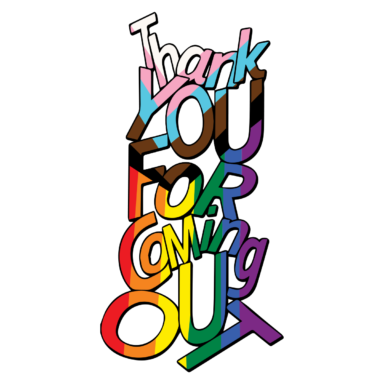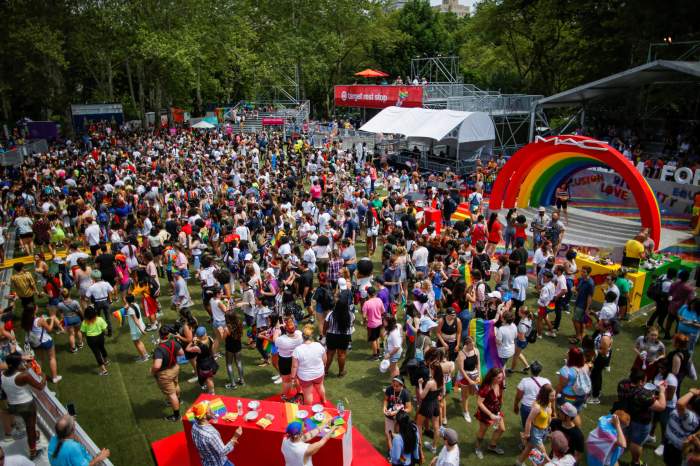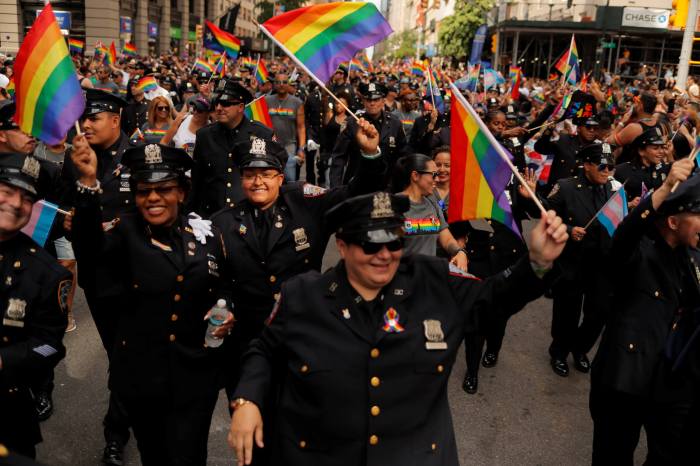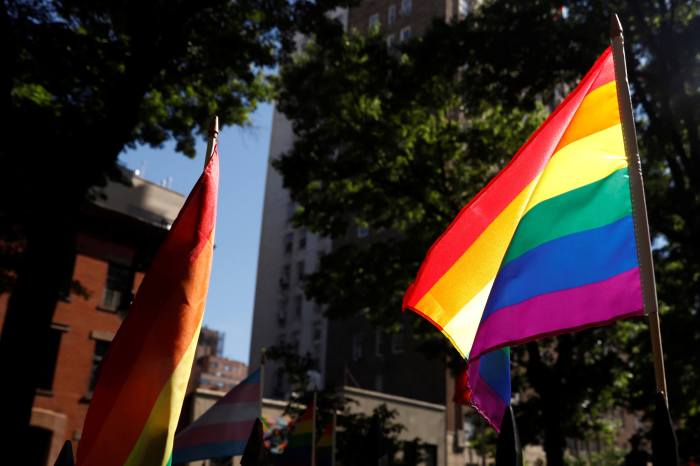Who is the Pride March for? The answer should be easy: the LGBTQ community. But that phrase is more a convenient fiction than a description of a group of people who agree about how to present themselves politically and culturally. Arthur J. Bressan’s documentary “Gay USA,” shot at Pride Marches in 1978, shows a lesbian criticizing drag queens as sexist. In retrospect, it’s likely that this was the start of TERF ideology. The right, including conservative gays and lesbians, has long seen Pride parades as an occasion for vulgar sexual display, while leftist concerns about corporate domination of the parade and the participation of police have led to the launch of the Queer Liberation March parade as an alternative. But starting last year, the left- and right-leaning critiques of Pride have increasingly merged.
Maybe it’s just part of life in 2021, but this has played as part of The Discourse on Twitter and YouTube. Online, generational, and geographical differences contract, but the way we speak is still marked by them. The far right has cherry-picked images of leathermen at Pride March for years to try and shock a larger public. But so much recent discourse about Pride suggests that many young LGBTQ people have internalized these images and defined the event by them. A photo of a young girl greeting two men doing puppy play went viral recently and has become a symbol of libertinism at Pride. But there’s one big issue: it was taken at San Francisco’s Folsom Street Fair, which is supposed to only admit adults, not a Pride March. When social media settles on the outrage of the day, these differences get lost.
Some have argued that they didn’t consent to witness any displays of kink at Pride. A few survivors of domestic violence or sexual assault have said that they’re triggered by the imagery associated with BDSM. Some asexual individuals have also complained that they feel alienated by sexual displays at Pride. This is a point worth considering, but a march this large can’t function as a safe space, especially when the notion of violations of consent comes close to mere offense. Judging from YouTube comments and tweets, many of these criticisms are concern trolling from people claiming to speak for asexuals and sexual assault survivors as if they all have a unified negative reaction to such imagery. As trans theorist Julia Serano tweeted, “Respectability politics is nothing new at Pride. If you don’t like the sexy-dressing people who attend, frame it in those terms, like you used to. But don’t appropriate language used to challenge ‘actual direct incidents of sexual violence’ to make your point.” Further down in that thread, Sam Logdson made a worthwhile comparison for people who may be genuinely psychologically harmed by certain displays of kink: “As a recovering alcoholic I may get triggered at any event with alcohol. To demand a dry event is placing the responsibility of managing my triggers on other people.”
The very popular pansexual socialist Twitch streamer/YouTuber Vaush went on a 26-minute rant in which he declared “Pride should be a celebration of liberation and identity. Do you have any idea how many people you ostracize by making it a f****** sex thing?” (The debate really seemed to blow up on Twitter after he stepped into it.) A far more nuanced response came from YouTuber Kat Blaque, who is transgender and frequently makes videos about her participation in BDSM. She made a distinction between a situation described in an earlier video, where she criticized someone for staging a humiliation scene in a public grocery store without anyone’s consent, and merely wearing a leather harness.
The debate points to something larger. The tensions between assimilation and resistance among LGBTQ people have existed since before Stonewall, when protesters earlier in the ‘60s donned suits for more polite but far less effective protests. The drag queens and trans women who fought the cops at Stonewall were pushed out of the ‘70s gay liberation movement. The push and pull between those two poles has long defined LGBTQ activism: ACT-UP and Queer Nation versus HRC and GLAAD. When same-sex marriage become legalized nationwide via the Supreme Court, it seemed as though assimilation had won. A certain level of complacency has set in since then, which has only changed with a general rise of the left amid legal assaults on trans people from Republican politicians.
The successes of the assimilationist approach benefited certain LGBTQ people — specifically, middle-class white cis gay men and lesbians — while leaving trans women targets for attacks that reproduce the exact “think of the children” rhetoric used by Anita Bryant back in the ‘70s. “Think of the children” has also been a running theme in attacks on the presence of kink at pride. While I think everyone would agree that there should be limits on the sexual imagery they’re exposed to, singling out leathermen ignores the reality of a world where half-naked women are used in advertising constantly and anyone can go on YouTube to watch Cardi B and Megan Thee Stallion’s softcore antics. The rhetoric of protecting minors from sexualization also ignores the differences between what a 7-year-old and 17-year-old can understand. Queer bodies are seen as inherently pornographic, therefore threatening. Personally, I’ve never seen anything raunchier at Pride than men in their underwear, which one might also see at the beach. But if a man strips down to his speedos at the march, he’s viewed as making it clear that he wants to be desired by other men. While it’s legal for people to go topless in New York, the Dyke March is one of the only occasions when women and some non-binary people can safely do so.
When I first started attending New York’s Pride march in the ‘90s, the idea that it would become a popular tourist attraction for heterosexual families with children seemed like science fiction. Normalizing the lives of LGBTQ people for this audience has become a function of Pride. But it also plays into a common form of rhetoric, where we deserve our rights because we’re just as normal and boring as everyone else. (Granted, this is a reaction to a specific set of stereotypes, where we’re all seen as having a dozen Grindr hook-ups a week before heading to a chemsex party every Saturday night.)
Is it possible to reconcile Pride’s radical roots and the fact that it began as the sequel to a riot, as well as the continuing need for leftist queer activism, with the huge, varied audience it now attracts and its massive co-option by corporations? The launch of the Queer Liberation March suggests that this question may be answered by splintering Pride march into something smaller and aimed at a more specific group of people rather than acting as though all LGBTQ people and our allies share the same ideology, interests and opinions about what we can do in public.



































